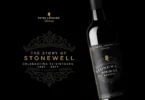A Rennaissance of German Riesling
“Could it be that the success of so many New World Rieslings has awakened a taste for the original? Could it be that tasting some Eden Valley, Marlborough or Washington examples has made us curious to approach those slender German flutes with their often Gothic lettering, bewildering nomenclature and frankly disastrous appellation regulations? Re-visiting and re-assessing Rieslings from Germany, where they find their strongest and purest expressions is a rewarding journey, full of twists and turns and unexpected vistas.”
The sheer breadth of styles is breathtaking: from ethereal, gossamer-like light Kabinett wines that are a mere but definite touch of lemon, via serious and grown-up food wines in dry and off-dry styles that can encompass flavours ranging anywhere from sun-ripened peaches, the beguiling evening scent of white summer blossom, honey, dried dates and raisins, fresh limes, lemons and grapefruits, candied orange peel to deep and more indescribable notions of kerosene, wet wool and lanolin, pencil shavings and stones. Entering the world of the sweet wines, with or without botrytis, extends this arc of flavour even further towards almond and hazelnut, chocolate, caramel and toffee, super-charged tropical fruit and scents so deep and earthy that you think you may just have had a whiff of the next world. What all of those styles have in common though, is the razing acidity, the backbone of any good Riesling.
 As many cool-climate varietals, Riesling does best in marginal climates. Germany’s oldest and most prestigious Riesling domaine, Schloß Johannisberg in the Rheingau, is on the 50th parallel and the Mosel vineyards are covering the 51st, just about as far north as you can go in viticultural terms (Canada’s Okanagan Valley is on the 49th, only English vineyards are more northerly). The vineyards are designed to catch every last ray of sunlight, hence the vertiginously steep Riesling vineyards in the Mosel. Riesling vines were first mentioned in a receipt dating back to 1435 and due to its frost resistance and hardiness Riesling has been grown in Germany ever since. Its true spiritual home are the stony, inhospitable slopes of red and blue slate, quartzite and marl. A Riesling epiphany is virtually guaranteed when you compare two Rieslings, vinified in the same style by the same winemaker of the same vintage, one grown on red slate, one grown on blue slate. The concept of ‘terroir’ will start making sense. As regards another popular term on various wine labels around the world: ‘vieilles vignes’ or ‘old vine’; ‘Alte Reben’ on a German label usually does not start before a vine age of 60 years where Riesling is concerned, another clue to the great depth of flavour. The good news is that one such bottle is definitely on a wine list near you. If you are lucky you will also have a sommelier who will de-code the label for you – indeed, this is what is at the heart of the Riesling Renaissance: Cuisine.
As many cool-climate varietals, Riesling does best in marginal climates. Germany’s oldest and most prestigious Riesling domaine, Schloß Johannisberg in the Rheingau, is on the 50th parallel and the Mosel vineyards are covering the 51st, just about as far north as you can go in viticultural terms (Canada’s Okanagan Valley is on the 49th, only English vineyards are more northerly). The vineyards are designed to catch every last ray of sunlight, hence the vertiginously steep Riesling vineyards in the Mosel. Riesling vines were first mentioned in a receipt dating back to 1435 and due to its frost resistance and hardiness Riesling has been grown in Germany ever since. Its true spiritual home are the stony, inhospitable slopes of red and blue slate, quartzite and marl. A Riesling epiphany is virtually guaranteed when you compare two Rieslings, vinified in the same style by the same winemaker of the same vintage, one grown on red slate, one grown on blue slate. The concept of ‘terroir’ will start making sense. As regards another popular term on various wine labels around the world: ‘vieilles vignes’ or ‘old vine’; ‘Alte Reben’ on a German label usually does not start before a vine age of 60 years where Riesling is concerned, another clue to the great depth of flavour. The good news is that one such bottle is definitely on a wine list near you. If you are lucky you will also have a sommelier who will de-code the label for you – indeed, this is what is at the heart of the Riesling Renaissance: Cuisine.
People who had bento boxes for lunch, rustled up a Thai Green Curry of an evening and were keen to sample endless ways of marinated, grilled tofu required wines that would enhance those pleasures. It all started with trying to find wines that would stand up to and complement the aromatic and distinct spices of India and often an off-dry Gewürztraminer is a superb choice. However, the more subtle curries, the lime leaves and ginger roots, the fusion cuisines of this world wanted something better: a wine that had depth and character on the palate and not just a blowsy, floral scent and off-dry taste. This was Riesling’s cue. It is a pleasing thought indeed, that this king of whites found its way back into our glasses via the table, via fresh and exotic tastes, through a new generation of open-minded and curious sommeliers and chefs. South Asian and Malay I hear you think and yes, as mentioned earlier, Thai. The residual sugar of some of the Rieslings sings with the sweetness of much chilli-spiced, lime-scented seafood. Such choices have by now become obvious. Simple really, once you have understood that Riesling can combine easy charm with steely depth.  Dry Rieslings have also found their way onto the wine lists, namely in Japanese restaurants. The less aromatic, sometimes very subtle and resonant flavours, say of dashi, seaweed or shiso require a wine that has equal depth but does not overpower. Soy sauce or one of its yuzu-flavoured derivates, ponzu, both very distinct tastes, need a wine that will not detract but stand up to them, on the palate rather than the nose. It is here that Riesling has found its new niche. Roka, one of London’s trendiest Japanese restaurants, starts its white wine list with three German Rieslings, one from the Pfalz, two from the Mosel. Testament to Riesling’s suitability is the presence of further examples from Alsace, New Zealand, Austria and Australia. Traditionally, in Germany, Riesling has accompanied anything from fish to meat and it would be difficult to find a better match for Hechtklößchen (quenelles of pike) than a fresh, rounded Riesling. Veal, poultry and other freshwater fish like trout are great partners, too, so we should not pigeonhole Riesling yet again. Why stop at exotic tables when we can take it so much further? Have you ever paired an Auslese with foie gras in place of a Sauternes? Have you sipped one of those delightful 10.5% ABV Kabinetts with just a hint of sweetness for a summer aperitif? The fresh fruit flavours and the tingling acidity whet your appetite and are a welcome change from more insipid summer wines. Another triumph and something wonderful to do with that flute-shaped off-dry curiosity you did not quite know what to do with: have it with a washed-rind soft cheese. Look to Alsace for Münster cheese or try a very ripe Reblochon. It works really a lot better than any red. The very sweet Auslese styles are a great foil for blue-veined cheeses, especially of the sharper sort. It is a joy to experiment.
Dry Rieslings have also found their way onto the wine lists, namely in Japanese restaurants. The less aromatic, sometimes very subtle and resonant flavours, say of dashi, seaweed or shiso require a wine that has equal depth but does not overpower. Soy sauce or one of its yuzu-flavoured derivates, ponzu, both very distinct tastes, need a wine that will not detract but stand up to them, on the palate rather than the nose. It is here that Riesling has found its new niche. Roka, one of London’s trendiest Japanese restaurants, starts its white wine list with three German Rieslings, one from the Pfalz, two from the Mosel. Testament to Riesling’s suitability is the presence of further examples from Alsace, New Zealand, Austria and Australia. Traditionally, in Germany, Riesling has accompanied anything from fish to meat and it would be difficult to find a better match for Hechtklößchen (quenelles of pike) than a fresh, rounded Riesling. Veal, poultry and other freshwater fish like trout are great partners, too, so we should not pigeonhole Riesling yet again. Why stop at exotic tables when we can take it so much further? Have you ever paired an Auslese with foie gras in place of a Sauternes? Have you sipped one of those delightful 10.5% ABV Kabinetts with just a hint of sweetness for a summer aperitif? The fresh fruit flavours and the tingling acidity whet your appetite and are a welcome change from more insipid summer wines. Another triumph and something wonderful to do with that flute-shaped off-dry curiosity you did not quite know what to do with: have it with a washed-rind soft cheese. Look to Alsace for Münster cheese or try a very ripe Reblochon. It works really a lot better than any red. The very sweet Auslese styles are a great foil for blue-veined cheeses, especially of the sharper sort. It is a joy to experiment.
What also deserves mention is the exceptional value these world-class wines represent. Many a German Winzer (winegrower/maker) toils away as dedicatedly as any vigneron in Burgundy, alas, he cannot command the same prices. Hand-crafted wines that are full of character are rarely so cheap. From austere to luscious, Riesling can do it all and therefore defies easy categorisation. It is hard to pin down but this definitely makes it into the thinking drinker’s grape. So sip and think, pleasure awaits!







